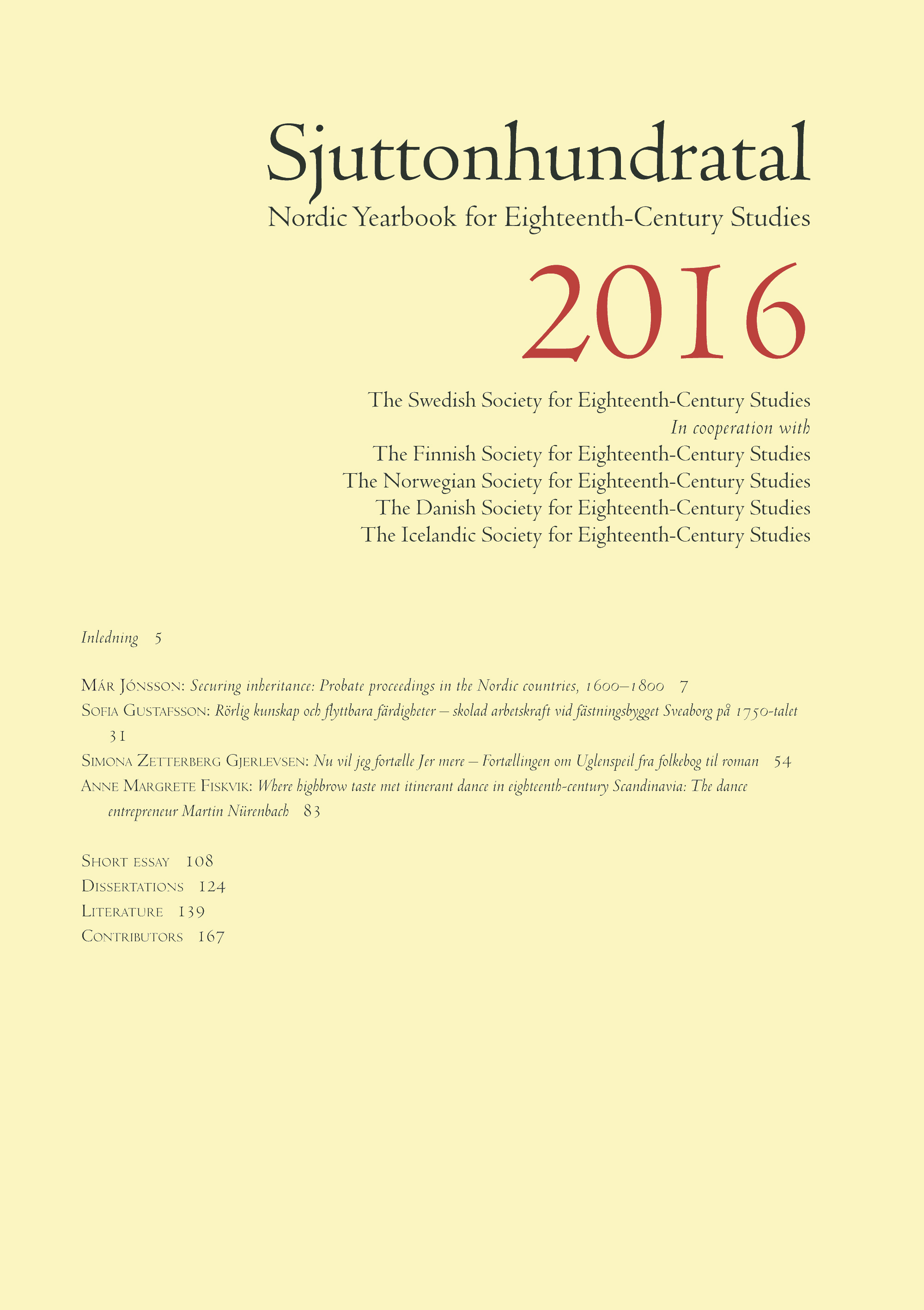Rörlig kunskap och flyttbara färdigheter – skolad arbetskraft vid fästningsbygget Sveaborg på 1750-talet
DOI:
https://doi.org/10.7557/4.3872Keywords:
technological transfer, human resources, migration, military investment, military constructionAbstract
Mobile knowledge and transferable skills: The construction of Sveaborg Fortress by a skilled workforce in the 1750s.
In the international debate about whether military investment can lead to economic growth, one of the key arguments has been the transfer of knowledge from the military to civil society. The construction of the sea fortress of Sveaborg (Suomenlinna) just off the coast of Helsinki in mid-eighteenth-century Finland provides a good example of this transfer. This huge military investment took place in peacetime and centred mainly on trade related to construction and shipbuilding, the very commerce that was also highly desirable for civil society. The army had to find its own construction solutions, most notably brickwork that used new techniques, and these innovations were later adopted by civilian entrepreneurs. The army also brought in skilled craftsmen to Helsinki, who, due to their limited number, also helped train soldiers in different skills. After working on Sveaborg, some of these craftsmen moved over to civilian employers or settled down in Helsinki as burghers. Similarly, demobilized soldiers returned home, taking their acquired skills with them. Between the army and civil society, therefore, there was a constant interaction and mutual exchange of knowledge and technology.









